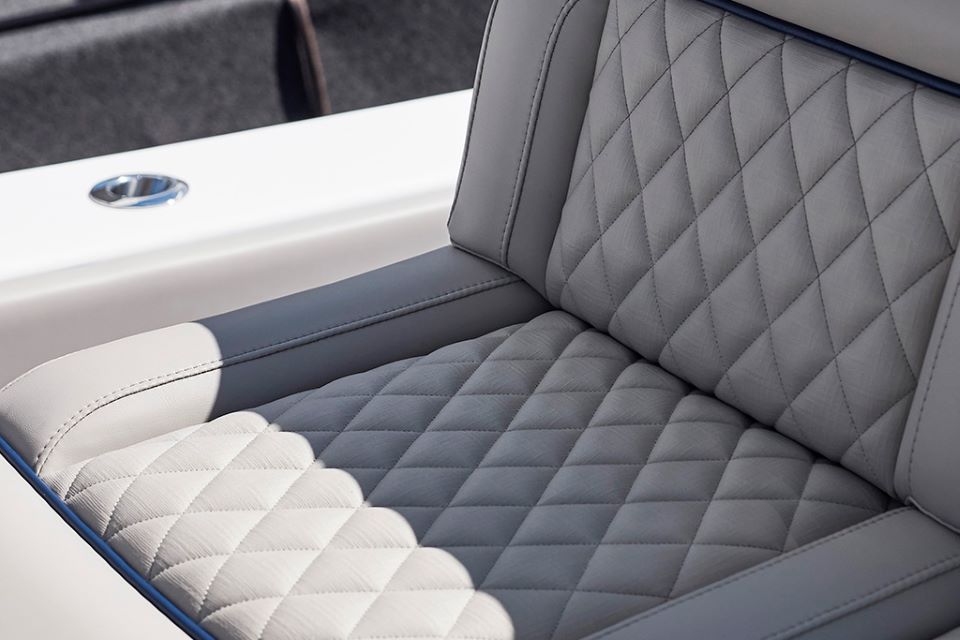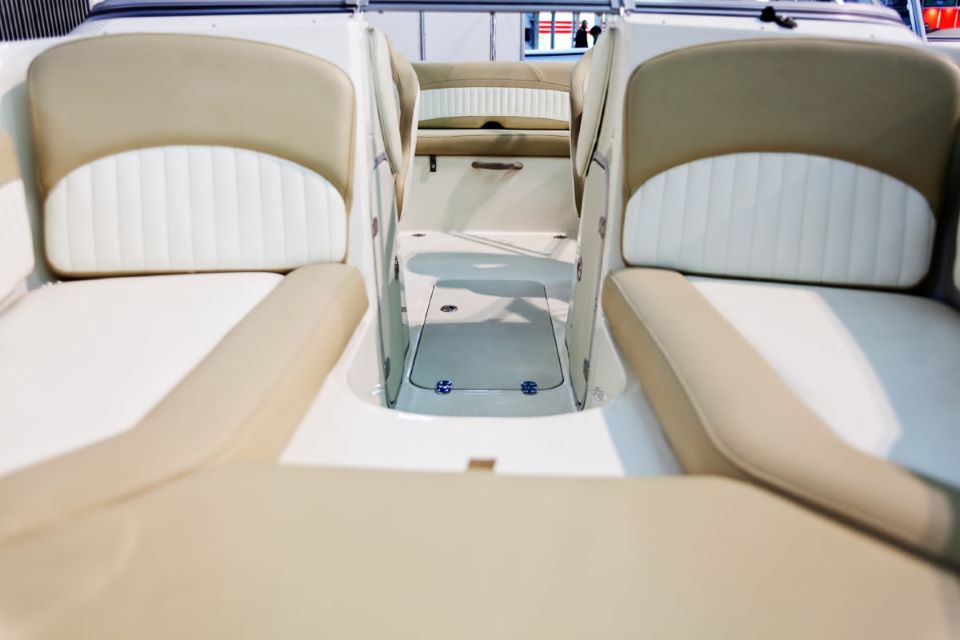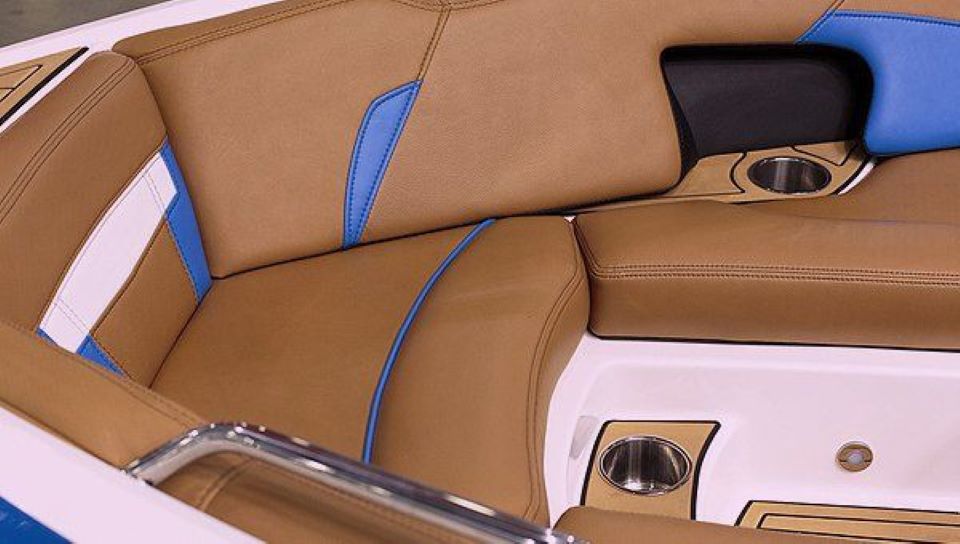If you’re a boat owner, you know how important it is to keep your vinyl boat seats in top condition. Not only do they provide comfort during your time on the water, but they also contribute to the overall aesthetics of your boat. However, constant exposure to sunlight, saltwater, and other elements can result in cracks, tears, and fading. The good news is that repairing a vinyl boat seat doesn’t have to be a daunting task. In this guide, we’ll walk you through the step-by-step process of restoring your vinyl boat seats to their former glory.

Follow These Easy Steps To Repair A Vinyl Boat Seat
Assessing the Damage
The first step in repairing a vinyl boat seat is assessing the extent of the damage. Take a close look at your seats and check for any cracks, tears, or fading. Cracks and tears can often occur due to wear and tear over time or from sharp objects coming into contact with the seats. Fading may be caused by prolonged exposure to sunlight or harsh cleaning chemicals.
To properly assess the damage, it’s important to examine each seat thoroughly. Run your hand over the surface of the vinyl to feel for any imperfections that may not be immediately visible. Take note of all problem areas so that you can address them during the repair process.
By identifying all areas in need of repair upfront, you’ll be better prepared with the necessary tools and materials for each specific issue.
Gathering the Required Materials
Before you begin repairing your vinyl boat seats, it’s essential to gather all the necessary materials and tools. Here’s a list of items you’ll likely need:
- Vinyl patches: These are used for repairing larger areas of damage.
- Adhesive: Choose a high-quality adhesive that is specifically designed for vinyl repairs.
- Scissors: You’ll need these to cut the vinyl patches to the appropriate size and shape.
- Cleaning solutions: Depending on the type of damage, you may need specialized cleaning solutions to remove dirt, grime, or stains.
- Heat gun or hairdryer: Heat can help with certain repair techniques, such as removing wrinkles or reshaping vinyl.
- Sanding sponge or fine-grit sandpaper: These are useful for smoothing out rough edges or preparing the surface for patching.
These are just some of the essential materials and tools you may need. Depending on the specific repairs required, you might also find other items helpful. Many of these items can be found at your local boating supply store or online.
Cleaning and Preparing the Seat
Before you start any repairs on your vinyl boat seat, it’s crucial to clean and prepare it properly. This step ensures that any adhesives or patching materials adhere effectively to the surface. Here’s how to do it:
- Remove any loose debris from the seat by gently brushing it off with a soft-bristle brush or using a vacuum cleaner with a suitable attachment.
- Dilute a mild cleanser in warm water and use a microfiber cloth or sponge to wipe down the seat thoroughly. Pay extra attention to areas with heavy grime or stains.
- Rinse the seat with clean water and dry it completely using a lint-free cloth. Ensure there’s no residual moisture remaining before proceeding with repairs.

Cleaning the seat not only improves adhesion but also helps in assessing any underlying damage that may not have been clearly visible initially. Remember to follow any specific instructions provided by the manufacturer of the cleaning solution you’re using.
Repairing Cracks and Tears
If your vinyl boat seat has cracks or tears, there are several methods you can use for repair:
- Vinyl adhesive: For small cracks or tears, apply a vinyl adhesive specifically designed for boat seat repairs. Follow the manufacturer’s instructions on how to properly apply the adhesive and press the edges of the crack or tear together.
- Vinyl repair kit: Some kits come with a patch that can be applied over larger cracks or tears. Cut the patch to size, apply adhesive to both the patch and the damaged area, and press them together firmly.
- Vinyl welding: This method involves using a heat gun or hairdryer to melt and fuse the cracked or torn vinyl back together. It requires some skill and should only be attempted if you’re confident in your abilities.
Each method has its benefits and limitations, so choose one that suits your level of expertise and the severity of the damage. If you’re unsure, consult with a professional upholstery repair service.
Restoring Color and Replacing Faded Areas
Fading is a common problem with vinyl boat seats due to prolonged exposure to sunlight. To restore color and address faded areas, consider these options:
- Vinyl dye: Using specialized vinyl dye, you can restore color to faded areas. Clean the seat thoroughly before applying multiple thin coats of dye, following the manufacturer’s instructions.
- Vinyl paint: Similar to vinyl dye, specialized vinyl paint can be used to restore color. Choose a paint color that matches your seat and apply it evenly using a small brush or sponge.
- Vinyl replacement: In extreme cases where the fading is severe or widespread, replacing the entire vinyl seat cover may be necessary. This may involve removing the old cover and installing a new one, which can be done professionally or as a DIY project with careful attention to detail.
Consider your budget, time constraints, and the extent of the fading when deciding which method to use for restoring color to your vinyl boat seat.
Applying Vinyl Patches
For larger areas of damage on your vinyl boat seat, applying vinyl patches can be an effective repair method. Here’s how:
- Clean and prepare the damaged area following the steps outlined earlier.
- Cut a vinyl patch slightly larger than the damaged area. Round off the edges of the patch to prevent peeling or lifting over time.
- Apply adhesive to both the patch and the damaged area. Allow the adhesive to become tacky before pressing the patch onto the seat.
- Smooth out any wrinkles or air bubbles by gently pressing from the center outward until fully adhered.
Avoid sitting on or applying pressure to the repaired area until the adhesive has fully cured. Follow any additional instructions provided by the adhesive manufacturer for optimal results.
Finishing Touches and Maintenance
After completing all necessary repairs on your vinyl boat seats, there are some finishing touches you should consider as well as ongoing maintenance practices to ensure their longevity:
- Allow sufficient drying time: Give your repaired seats ample time to dry and cure before using them. This usually takes between 24 to 48 hours, but check the instructions provided by the adhesive or patch manufacturer for specific recommendations.
- Protective sealant: Consider applying a protective sealant specifically designed for vinyl surfaces. This can add an extra layer of protection against UV rays, water damage, and stains.
- Regular cleaning: Maintain your vinyl boat seats by regularly cleaning them with mild cleansers and avoiding harsh chemicals that may degrade the vinyl over time.
- Avoid prolonged exposure to sunlight: Whenever possible, protect your boat seats from direct sunlight by using covers or storing your boat in a shaded area. This helps prevent fading and prolongs their lifespan.

By following these finishing touches and incorporating regular maintenance practices into your routine, you can enjoy comfortable and aesthetically pleasing vinyl boat seats for years to come.
Tips for Preventing Vinyl Boat Seat Damage
While knowing how to repair vinyl boat seats is essential, taking preventive measures can help prolong their lifespan and minimize the need for repairs. Here are some tips to protect your vinyl boat seats:
- Regular cleaning: Clean your vinyl boat seats regularly using mild cleansers to remove dirt, grime, and salt residue. This prevents buildup that could lead to damage or discoloration.
- Protective covers: Consider using protective covers when your boat is not in use or during prolonged periods of storage. Covers provide an additional barrier against UV rays, moisture, and other elements that can cause damage.
- Sunshade devices: Install sunshades or awnings on your boat to provide shade and reduce direct sunlight exposure on the seats. This helps prevent fading and cracking due to UV rays.
- Avoid harsh chemicals: Use cleaning products specifically formulated for vinyl surfaces. Avoid using harsh chemicals, bleach, or abrasive cleaners that can degrade the vinyl material over time.
- Proper storage: When not in use, store your boat in a dry location away from extreme temperatures. Excessive heat or cold can affect the integrity of the vinyl material.
By following these preventative measures, you can keep your vinyl boat seats looking great and extend their lifespan.
Hiring Professional Upholstery Services
In some cases, repairing vinyl boat seats may require professional expertise. If you’re unsure about tackling repairs on your own or if the damage is extensive, consider hiring professional upholstery services specializing in marine upholstery. These professionals have the knowledge and experience to handle a wide range of repair and restoration tasks.
When hiring professional upholstery services, keep the following points in mind:
- Experience and expertise: Look for service providers with specific experience in marine upholstery and vinyl boat seat repairs. Check their portfolio or ask for references to ensure they have a proven track record.
- Range of services: Determine whether the upholstery service offers a comprehensive range of services, from minor repairs to full seat replacements. This ensures they can address your specific needs.
- Quality materials: Inquire about the type of materials and products used by the service provider. Ensure they use high-quality vinyl, adhesives, and other materials that will result in durable and long-lasting repairs.
- Pricing and timeline: Obtain multiple quotes from different upholstery services to compare pricing and turnaround times. Consider the overall value provided by each service, including the quality of workmanship and customer satisfaction.
- Warranty or guarantee: Ask whether the upholstery service offers any warranty or guarantee on their workmanship. A reputable service provider should stand behind their repairs and offer some form of assurance.

Hiring a professional upholstery service can save you time, and effort, and potentially provide better results than DIY repairs. Evaluate your specific needs, budget, and the condition of your vinyl boat seats to decide whether professional assistance is warranted.
Key Takeaways
- To repair a vinyl boat seat, assess the damage and gather the necessary materials.
- Clean and prepare the seat before repairing cracks, tears, or faded areas.
- Restore color with vinyl dye/paint or replace faded sections if needed.
- Apply vinyl patches for larger damaged areas and allow sufficient drying time.
- Regular maintenance can prolong the lifespan of your repaired vinyl boat seats.
Frequently Asked Questions
Here are some frequently asked questions about repairing vinyl boat seats:
1. Can I repair a vinyl boat seat myself, or should I hire a professional?
It is possible to repair a vinyl boat seat yourself if you feel confident and have the necessary tools and materials. However, for extensive damage or if you’re unsure, it’s advisable to hire a professional upholstery service specializing in marine upholstery.
If you choose to repair it yourself, make sure to follow proper instructions and take necessary precautions.
2. How do I determine if I need to replace or repair my vinyl boat seat?
The decision to replace or repair your vinyl boat seat depends on the extent of the damage. Minor cracks, tears, or fading can often be effectively repaired. However, if the damage is severe and affects the structural integrity of the seat, it may be best to consider replacing it entirely.
Evaluate the condition of your seat and consult with an expert if needed for guidance on whether repair or replacement is the most suitable option.
3. What are some preventative measures to protect vinyl boat seats?
To protect your vinyl boat seats from damage, regular cleaning using suitable cleansers is essential. Additionally, consider using protective covers when storing your boat, install sunshade devices for UV protection, avoid harsh chemicals when cleaning, and store your boat in a dry location away from extreme temperatures.
Taking these preventive measures can prolong the lifespan of your vinyl seats and reduce the chances of damage.
4. Are there specific products I should use for cleaning vinyl boat seats?
Yes, it’s recommended to use mild cleansers specifically formulated for cleaning vinyl surfaces. These cleaners effectively remove dirt and grime without causing damage. Avoid using harsh chemicals, bleach, or abrasive cleaners, as they can degrade the vinyl material over time.
Read and follow the manufacturer’s instructions when choosing and using cleaning products for your vinyl boat seats.
5. How often should I clean and maintain my vinyl boat seats?
Regular cleaning and maintenance are crucial to keep your vinyl boat seats in good condition. It is recommended to clean the seats after each boating outing, especially if they’ve been exposed to saltwater or excessive dirt. Additionally, periodic maintenance such as applying protective sealants or treatments can help extend their lifespan.
Adhering to a regular cleaning and maintenance schedule will ensure that your vinyl boat seats remain in optimal condition for years to come.
Final Thought
In conclusion, knowing how to repair a vinyl boat seat can save you time and money. By assessing the damage, gathering the necessary materials, and following the proper steps for cleaning and repairing, you can restore the comfort and appearance of your boat seats. It’s important to take preventive measures to protect your vinyl seats and consider professional help for extensive damage. With regular maintenance and care, your vinyl boat seats can provide many more enjoyable boating experiences.
Remember to always follow manufacturer instructions for any products or techniques used in the repair process. Taking proactive measures such as regular cleaning, proper storage, and avoiding harsh chemicals can help prevent or minimize damage to your vinyl seats. Whether you choose to tackle repairs yourself or seek professional assistance, keeping your vinyl boat seats in excellent condition will enhance both the aesthetics and longevity of your boating adventures.
